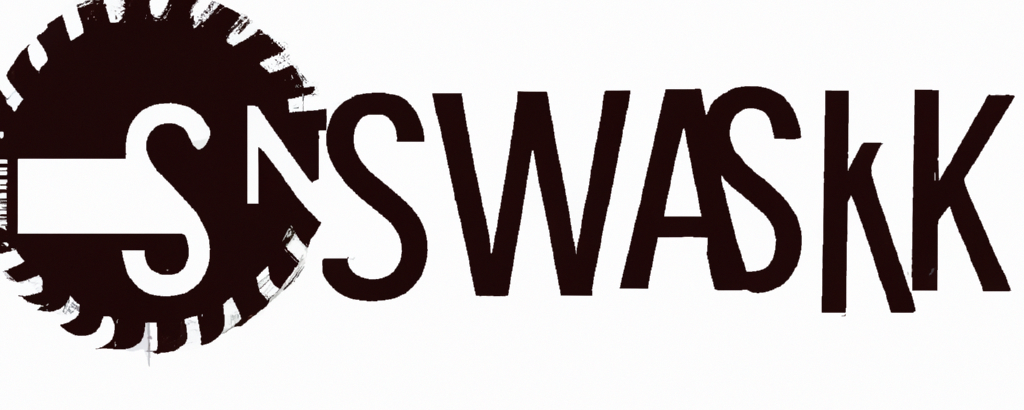What Happens When You Use A Table Saw Blade Backward?

In a world where DIY reigns supreme and innovation is often encouraged, woodworkers frequently find themselves pushing boundaries to achieve unique results. One growing trend in the woodworking realm is running table saw blades backward.
But what motivates this experimentation? And more crucially, what are the potential consequences of such a practice? Let’s dive into this.
The Technical Mechanics of Blades
Engineering Mastery: Designed for Direction
Every table saw blade is a masterpiece of engineering. These tools are constructed with a specific rotational direction in mind. This isn’t just for efficient wood cutting—it’s also vital for the safety of the user.
A blade’s teeth are designed to chip away at the wood in its intended direction, offering both precision and speed.
Carbide Tips: The Vulnerable Frontline
One of the primary components of many saw blades is the carbide tip—a material revered for its hardness and sharpness. But when blades are run backward, these carbide tips face unprecedented stress, making them susceptible to breakage and, consequently, posing significant danger.
Venturing into Unknown Territory: The Risks
The Perils of Ignorance
Imagine driving a car with no understanding of traffic rules. The danger would be palpable. Similarly, reversing a table saw blade without understanding its implications can result in catastrophic consequences.
From kickbacks to splinters, the potential hazards are numerous and severe.
Physical Dangers on the Horizon
Running blades backward not only compromises the blade’s integrity but also poses risks like flying blade fragments and the sudden and unexpected release of trapped energy.
Such unforeseen dangers can lead to severe injuries or damage to the woodworking project.
Real Stories from the Workshop Floor
Bill Johnson: An Unexpected Outcome
When Bill decided to run his table saw blade backward, he anticipated cleaner cuts. Instead, he was met with overheated wood pieces and an unpredictable flurry of sawdust. Such tangible experiences highlight the real-world implications of experimental techniques.
RobinDobbie’s Learning Curve
Robin’s concerns arose when adjusting blade height mid-cut. The reversed blade made the wood grabby, posing challenges in control and precision, emphasizing the need for extreme caution.
woodnthings on Technique Nuances
Feeding stock from the rear vs. retracting wood post a partial cut are distinct operations. woodnthings highlights the intricacies of each, stressing the importance of understanding tool behavior.
Safety First: The Woodworking Community Chimes In
rrich’s Words of Caution
Prioritizing safety above all, rrich’s narrative urges woodworkers to stick to established norms and manufacturer guidelines.
ryan50hrl’s Observational Wisdom
Deep-diving into the dynamics of board direction, blade orientation, and fence relations, ryan50hrl shares intricate observations that can be pivotal for safe woodworking practices.
BWSmith’s Exploration of Climb Cutting
Climb cutting, or moving the workpiece in the same direction as the blade’s rotation, is a technique BWSmith introduces. While this can offer smoother cuts, it comes with its set of challenges and demands caution.
Are There Valid Reasons for Reverse Mounting Blades?
Aluminum Cuts: A Potential Niche?
Some craftsmen believe reversed blades offer better results when cutting aluminum gutters. However, the merits of such claims need thorough evaluation against the potential risks.
Plastic Laminate and Vinyl Siding
There are whispers in the woodworking community about achieving smoother finishes on plastic laminates and cleaner cuts on vinyl sidings using reversed blades. Yet, one must weigh these potential benefits against the inherent dangers of the technique.
Safety Protocols for the Conscientious Woodworker
Blade Position Post-Operation
After any reverse blade operation, it’s paramount to revert the blade to its standard orientation. Ensuring such practices can mitigate risks during subsequent operations.
Securing the Blade
Consistent reversal might cause blade loosening over time, leading to potential wobbly table saw operations. Regular checks and tightening measures are essential to prevent the blade from becoming loose and ensure stable table saw performance.
Switch Ergonomics and User Safety
Understanding the switch positions and ensuring they are in optimal positions post-operation is another crucial safety measure. An unintentional start can result in significant harm.
Exploring Safe Alternatives
The Trustworthy Band Saw
For woodworkers seeking alternative cutting techniques, the band saw might be the solution. Its design inherently offers more control, especially for intricate cuts, while minimizing many risks associated with table saws.
Redlee’s Techniques for Edge Perfection
Redlee shares techniques that avoid blade reversal but still provide impeccable edge finishes. Adhering to such established and safe methods ensures both quality and safety.
Conclusion: Navigating the Balance between Innovation and Safety
While the realm of woodworking offers immense scope for innovation, it’s essential to remember that safety should never be compromised. Running a table saw blade backward might seem like a novel approach, but its potential risks can overshadow its benefits.
Always prioritize safety, stay informed, and remember that the right technique is the one that ensures both a successful project and the well-being of the craftsman.
People Also Ask:
Can you use a table saw backward?
Yes, but it can result in reduced cutting performance, increased risk of kickback, and damage to the blade.
Can I turn the saw blade backward to cut metal?
It is not recommended to turn a saw blade backward to cut metal as it can cause damage to the blade and increase the risk of kickback.
Why does the coping saw blade have to be in the correct position?
The coping saw blade has to be in the correct position to ensure that the teeth are cutting in the correct direction and to prevent damage to the blade.
Can you put a circular saw blade on backward?
It is not recommended to put a circular saw blade backward as it can result in reduced cutting performance, increased risk of kickback, and damage to the blade.
